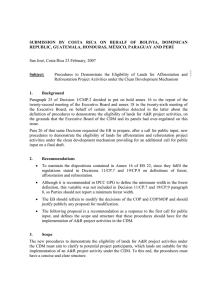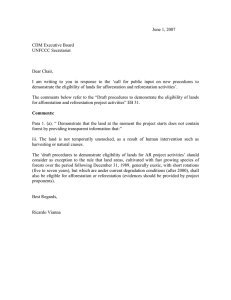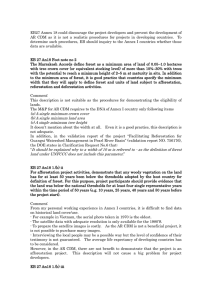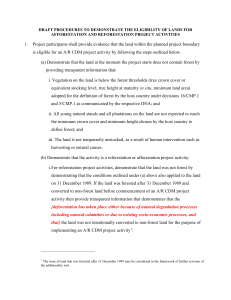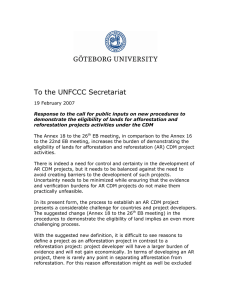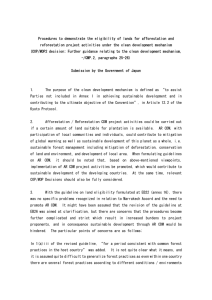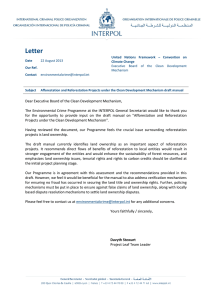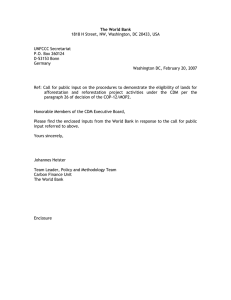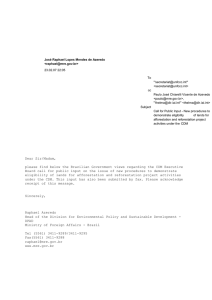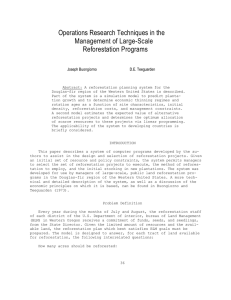SUBMISSION BY COLOMBIA ON PROCEDURES TO DEMONSTRATE THE
advertisement
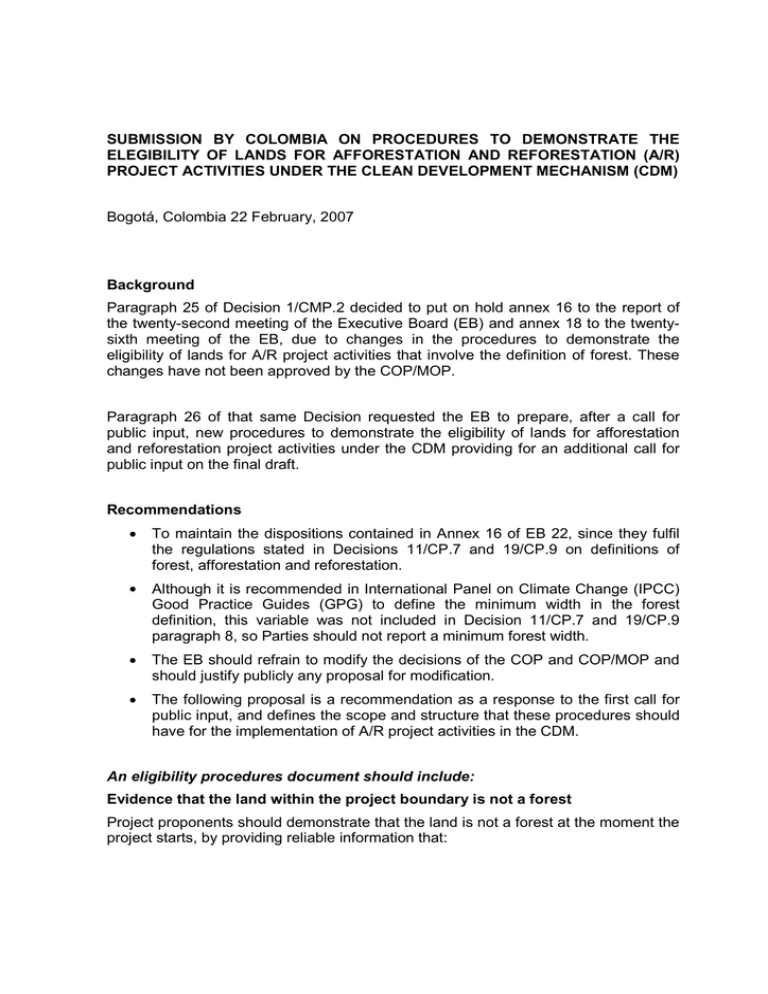
SUBMISSION BY COLOMBIA ON PROCEDURES TO DEMONSTRATE THE ELEGIBILITY OF LANDS FOR AFFORESTATION AND REFORESTATION (A/R) PROJECT ACTIVITIES UNDER THE CLEAN DEVELOPMENT MECHANISM (CDM) Bogotá, Colombia 22 February, 2007 Background Paragraph 25 of Decision 1/CMP.2 decided to put on hold annex 16 to the report of the twenty-second meeting of the Executive Board (EB) and annex 18 to the twentysixth meeting of the EB, due to changes in the procedures to demonstrate the eligibility of lands for A/R project activities that involve the definition of forest. These changes have not been approved by the COP/MOP. Paragraph 26 of that same Decision requested the EB to prepare, after a call for public input, new procedures to demonstrate the eligibility of lands for afforestation and reforestation project activities under the CDM providing for an additional call for public input on the final draft. Recommendations • To maintain the dispositions contained in Annex 16 of EB 22, since they fulfil the regulations stated in Decisions 11/CP.7 and 19/CP.9 on definitions of forest, afforestation and reforestation. • Although it is recommended in International Panel on Climate Change (IPCC) Good Practice Guides (GPG) to define the minimum width in the forest definition, this variable was not included in Decision 11/CP.7 and 19/CP.9 paragraph 8, so Parties should not report a minimum forest width. • The EB should refrain to modify the decisions of the COP and COP/MOP and should justify publicly any proposal for modification. • The following proposal is a recommendation as a response to the first call for public input, and defines the scope and structure that these procedures should have for the implementation of A/R project activities in the CDM. An eligibility procedures document should include: Evidence that the land within the project boundary is not a forest Project proponents should demonstrate that the land is not a forest at the moment the project starts, by providing reliable information that: a) Forest cover in the designated land is below the national definition of forest thresholds (crown cover, tree height and minimum land area) detailed in Decisions 11/CP.7 (16.CMP.1) and 19/CP.9 (5/CMP.1), as communicated by the respective DNA; b) The land is not temporarily unstocked as a result of human intervention; c) The land is not covered by natural vegetation that would naturally reach the applicable definition of a forest, nor has the environmental conditions to do so in the span of operation of the proposed project activity. Preconditions for afforestation and reforestation project activities: Project proponents will have to demonstrate that the land proposed for the project activity is eligible for afforestation or reforestation, according to the definitions contained in Decisions 11/CP.7 (16.CMP.1) and 19/CP.9 (5/CMP.1). Sources of verifiable information In order to provide evidence for the sections above, project participants may use one or more of the following sources of verifiable information: a) Aerial photographs or satellite imagery complemented by ground reference data; or b) Land use or land cover information from maps or digital spatial datasets; or c) Ground based surveys (land use or land cover information from permits, plans, or information from local registers such as cadastre, owners registers, or other land registers); or d) If options (a), (b), and (c) are not available/applicable, project participants shall submit a written testimony which was produced by following a Participatory Rural Appraisal (PRA) methodology. 2
